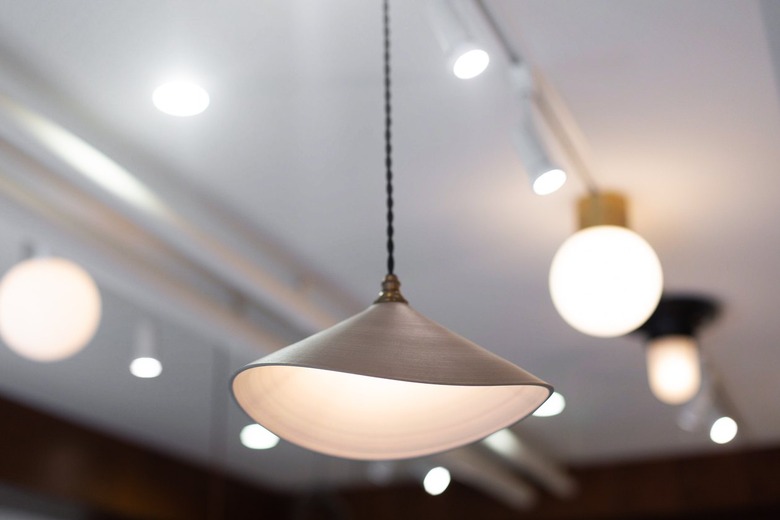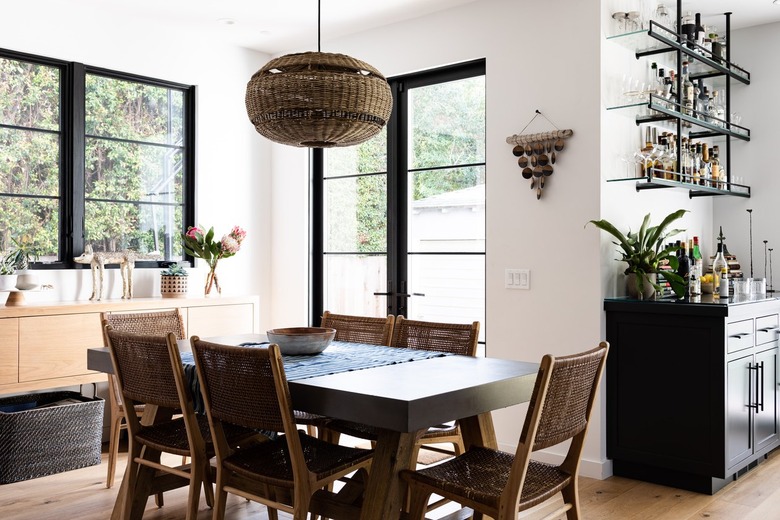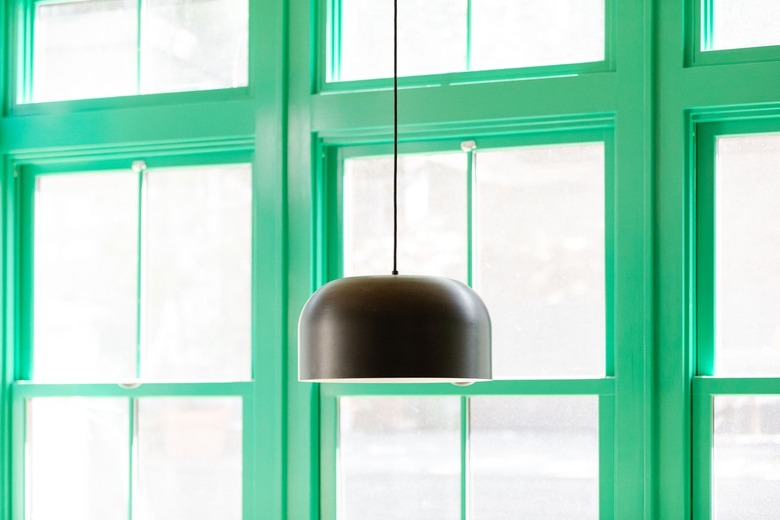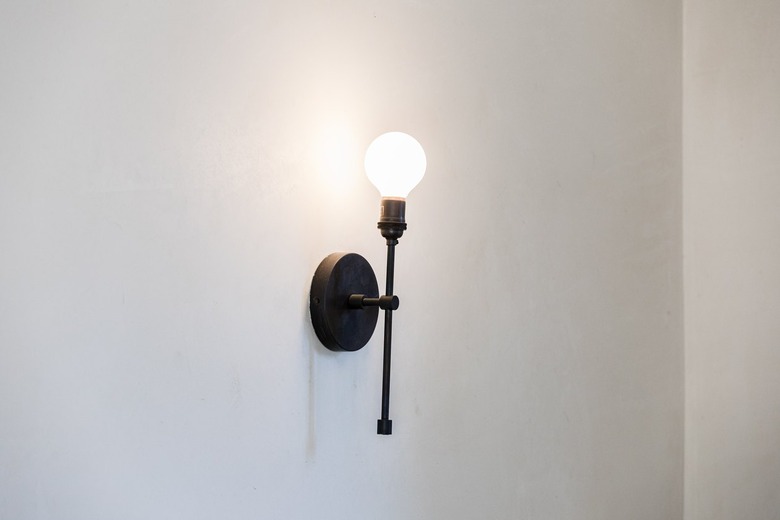How To Hang A Light Fixture At The Perfect Height
Whether you're upgrading your lighting or building a brand-new home, you'll not only need to decide what type of lighting you want but also at what height each fixture will need to hang. Though it seems like a small decision, the height of your light fixtures will affect the ambiance of the room, how much light you have to complete a task (like cooking, reading, or working at your desk), and, of course, how much room you have when maneuvering around the space.
"I would say there are a lot of rules around hanging light fixtures, and there is a lot of what feels 'right'" Asher Kohring, the senior buyer for Shades of Light, tells Hunker. "It really depends on if [the light fixture] is going over a dining room table, if it's going over a kitchen island, or if it's hanging in a foyer. The first question you have to ask yourself is, 'Where is it going?'" Kohring says.
Because hanging a light fixture is no simple task, it's best to get the measurements figured out before you begin so you don't have to make adjustments to the height after you've wired something in (or return a light fixture that doesn't work for the space).
Are you getting ready to shop for light fixtures and unsure of what measurements you need to know? Here's a quick guide to proper heights for light fixtures in every room in the house.
Height of a Light Above a Dining Room Table
The right dining room light fixture can help create a good atmosphere in your space, but not when it's obstructing your view of your fellow diners (or up so high that it looks strange). So, how high should a dining room light hang? A good rule of thumb is to aim for an optimum height of 30 to 36 inches above your dining table or a kitchen island, according to Kohring. With an average dining room table height between 28 and 32 inches, this would mean the light fixture (likely a pendant light or chandelier) would be hung about 5 to 6 feet above the floor.
However, this 30- to 36-inch rule goes out the window if your ceiling height is taller than the average 8 or 9 feet (lucky you). "Scale is extremely important — taller fixtures or rooms impact the placement. For instance, taller fixtures should be held higher from the floor so that the scale feels appropriate," Kurt Beres, MA Design's lighting designer, tells Hunker. "If a tall room has sconces or pendants that create a sense of a ceiling, try to locate them above 9 feet or in the upper third of the overall height of the room."
Bedroom and Living Room Fixture Light Height
In the bedroom and living room, you won't necessarily need as much lighting as the kitchen (unless the space doubles as your work-from-home office), but generally, you'll want overhead lighting and perhaps some sconces for reading before bed. So, at what height should you hang bedroom or living room lighting? For overhead lighting, you shouldn't have anything hanging below 7 feet.
"You want to have plenty of clearance so no one is hitting their head or their arms when you're walking underneath or reaching up if you're walking. If you have an 8-foot ceiling — 8-foot ceilings used to be kind of the standard height — that leaves you about a foot to work with," says Kohring.
And what about wall sconces? Though there aren't any hard-and-fast rules for the height you hang sconces, Kohring suggests that they be hung at eye level or above (or about 44 inches from the floor). If the sconces or wall lights are on either side of the bed, however, you want to ensure the light is coming from above. The height at which you hang them will also depend on if the shade is directed task lighting or if it's more ambient light.
Bathroom Light Height
Other than the kitchen, there's no other place in the house where lighting is more important than the bathroom. So, what's an appropriate bathroom light height? Similar to other rooms, you don't want the bottom of the ceiling light to hang lower than 7 feet if you'll be walking underneath it. For lighting over a bathroom countertop, you want to hang it 30 to 36 inches, according to Kohring.
"With bathrooms, the only real specific thing you want to do is make sure your fixtures are damp- or wet-rated according to what your electrician says is recommended for that area. Hanging fixtures over bathtubs is something a lot of people want to do, but we recommend talking to your electrician about what passes code in your particular home," Kohring tells Hunker.
Hallway Light Height
Whether you're looking to illuminate a grand foyer or you simply need overhead hallway lighting to guide your way to the bathroom in the middle of the night, the same height rules apply for light fixtures as other rooms. For overhead lighting in the hallway or entryway, you don't want anything hanging below 7 feet.
If you're hanging sconces (which can look particularly great in long hallways), be sure to hang them at least at eye level — around 44 inches — or above. But when it comes to hanging sconces, Beres says that keeping depth in mind is just as important as height.
"Be mindful when locating sconces if they are more than 4 inches deep. They should not project into a walking surface below 6 foot 8 inches above finish floor. We typically shoot [to hang sconces] at the top of doors," Beres tells Hunker.
Having more than 4 inches of depth on a light fixture below 80 inches will inhibit those who use a wheelchair from maneuvering easily around the space, so it's important to keep this in mind when shopping for lighting.




